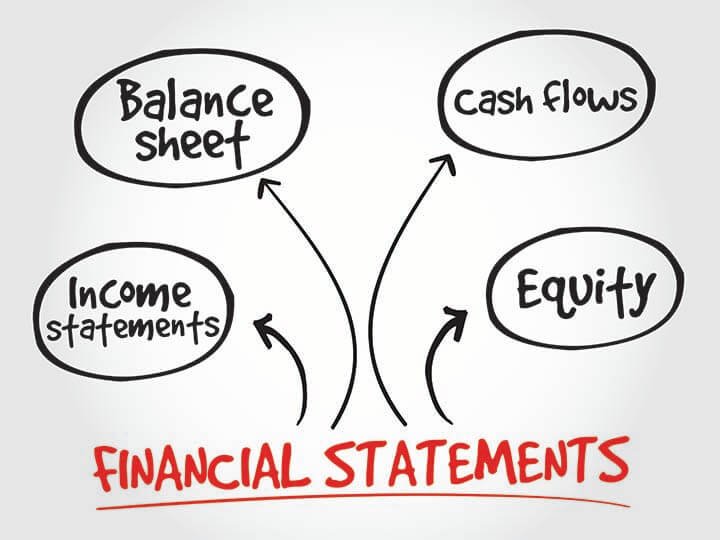Daniel Davidson, MD, MBA, DBA, PHD
Introduction:
An important source of information on a company’s financial performance and status at a particular moment in time are its financial statements. They are an essential tool for creditors, investors, analysts, and other stakeholders to evaluate the stability and health of a company’s finances. We will examine the definition of financial statements, their elements, and their importance in financial analysis in this article.
What is a Financial Statement?
A financial statement is an official account of a company’s financial performance and status that is provided in an organized manner to aid in analysis and decision-making. It is made up of a few essential parts that give information on the company’s earnings, costs, assets, liabilities, and equity. In compliance with accounting rules and regulations, financial statements are normally prepared on a regular basis, such as quarterly or annually.
Components of Financial Statements:
Profit and Loss Statement (Income Statement):
Revenue: The entire amount of money received during a certain time period from the sale of goods or services is included in this section.
COGS, or cost of goods sold, is: represents the direct expenses incurred by the business in creating the goods or services it sells.
Gross profit:
Gross profit is the amount of profit made before operating expenditures are subtracted. It is computed by deducting COGS from revenue.
Operating expenses:
Operating expenses include things like rent, utilities, payroll, and marketing charges that are incurred in the regular course of running the company.
Operating income:
Operating income is the profit from the company’s primary operations and is computed by deducting operating expenses from gross profit.
Non-operating Income and Expenses:
This category includes earnings and outlays for things like interest and investment profits or losses that aren’t directly tied to the company’s main operations.
Net income:
Net income, sometimes referred to as the bottom line, is the net profit or loss for the business after all costs, including taxes and other charges, have been subtracted.
Statement of Financial Position, or balance sheet:
Resources:
These are the assets that the business owns or controls, including money, stock, machinery, property, and accounts receivable.
Liabilities:
Show the commitments and debts of the business, such as loans, accounts payable, and accumulated costs.
Shareholders’ Equity:
The gap between the company’s assets and liabilities is often referred to as owner’s equity or net worth. Retained earnings, additional paid-in capital, common stock, and other equity accounts are all included.
The Cash Flow Statement
Operating Activities:
The cash flows resulting from the company’s regular business operations, such as payments to suppliers and staff as well as customer receipts.
Investing Tasks:
Cash flows from the purchase or sale of long-term assets, such as securities investments or machinery and plant.
Financing Activities:
The cash flows that are associated with the financing activities of the company, such as dividend payments or debt repayments, proceeds from the sale of stock, and borrowing funds.
Net Cash Flow:
The total of the cash flows from financing, investing, and operating operations; it shows how the company’s cash and cash equivalents changed over the course of the time.
A Statement of Equity Changes:
Starting Equity:
The initial balance of stockholders’ equity at the start of the time frame.
Net Income or Loss:
Indicates the profit or loss for the time in which the company operates and has an impact on shareholders’ equity.
Dividends:
Payments made to shareholders in the form of cash or stock that lower their equity.
Gains or losses that are not included in net income, such as adjustments to the fair value of investments, are included in other comprehensive income.
Ending Equity:
The total of beginning equity, net income or loss, dividends, and other comprehensive income that represents the closing amount of shareholders’ equity at the conclusion of the period.
Significance of Financial Statements:
Evaluation of Performance:
A company’s financial performance during a given time period can be evaluated by stakeholders using its financial statements. Through the examination of measures like ROI, profitability ratios, and revenue growth, creditors and investors can assess the efficiency with which the business is turning a profit and adding value for its owners.
Support for Decision-Making:
By giving managers, investors, and creditors access to pertinent financial data, financial statements are an essential instrument for decision-making. In order to make decisions that are in line with their goals and interests, stakeholders rely on financial statements when evaluating investment opportunities, determining creditworthiness, or developing corporate plans.
Evaluation of Financial status:
Financial statements provide information about the liquidity, solvency, and financial status of a business. Stakeholders can evaluate the company’s overall financial health, debt levels, and asset mix by looking at the balance sheet. Investors and creditors can use this information to assess the company’s capacity to pay short- and long-term debt.
Transparency and Accountability:
By offering a thorough overview of a company’s financial performance and condition, financial statements support transparency and accountability. The public and investors are encouraged to have faith in publicly listed corporations since they are compelled to reveal their financial statements to regulatory bodies and shareholders. A company’s commitment to moral and responsible business practices is demonstrated by transparent financial reporting, which also increases credibility.
Risk management:
By pointing out possible financial risks and weaknesses, financial statements are essential for risk management. Through the examination of variables including debt levels, cash flow trends, and liquidity ratios, stakeholders can evaluate the degree of risk associated with the organization and proactively address the risks in order to safeguard their interests.
Communication Tool:
Financial statements are a useful tool for communicating financial information to a range of stakeholders, including as lenders, employees, shareholders, and regulatory bodies. Fostering trust and confidence in the company’s management and operations is made possible by clear and transparent financial reporting, which assists stakeholders in understanding the company’s financial performance, goals, and future prospects.
Comparative Analysis:
By providing data for several time periods, financial statements facilitate comparative analysis and help stakeholders spot trends, patterns, and changes across time. Financial statements from several periods can be compared to evaluate the performance trajectory of the business and pinpoint areas that need attention or improvement.
Openness & Disclosure:
Accounting standards and regulatory regulations control the preparation and presentation of financial statements. The consistency, correctness, and transparency of financial reporting are guaranteed by these standards, which gives financial statements greater confidence and dependability in the eyes of stakeholders.
External Audit and Assurance:
To confirm the integrity and accuracy of their financial accounts, publicly traded companies frequently submit to external audits carried out by independent audit firms. Investors and creditors are reassured by external audits that the financial data in the statements is accurate and devoid of significant misstatements.
Measures of Non-Financial Performance:
Even while they offer insightful information about a company’s financial performance, financial statements might not fully depict all facets of its profitability and operations. An even more comprehensive picture of the company’s entire performance and value creation is obtained by augmenting financial measures with non-financial performance indicators, such as environmental sustainability, employee engagement, and customer happiness.
Utilize of Ratios and Metrics:
To evaluate different facets of a company’s performance and financial health, analysts and investors utilize financial ratios and metrics obtained from financial statements. Common ratios that offer quantitative benchmarks for comparison and analysis are leverage ratios (e.g., debt-to-equity ratio), profitability ratios (e.g., return on equity), and liquidity ratios (e.g., current ratio).
Conclusion:
Financial statements are crucial in giving stakeholders important information on the health, position, and cash flows of a business. These records provide an all-encompassing picture of a company’s financial stability and health through sections like the cash flow statement, balance sheet, income statement, and statement of changes in equity.
Financial statements are an essential instrument for risk management, decision-making, and performance assessment for creditors, investors, analysts, and regulators. They support accountability, transparency, and comparative analysis, promoting informed decision-making and building stakeholder confidence.








